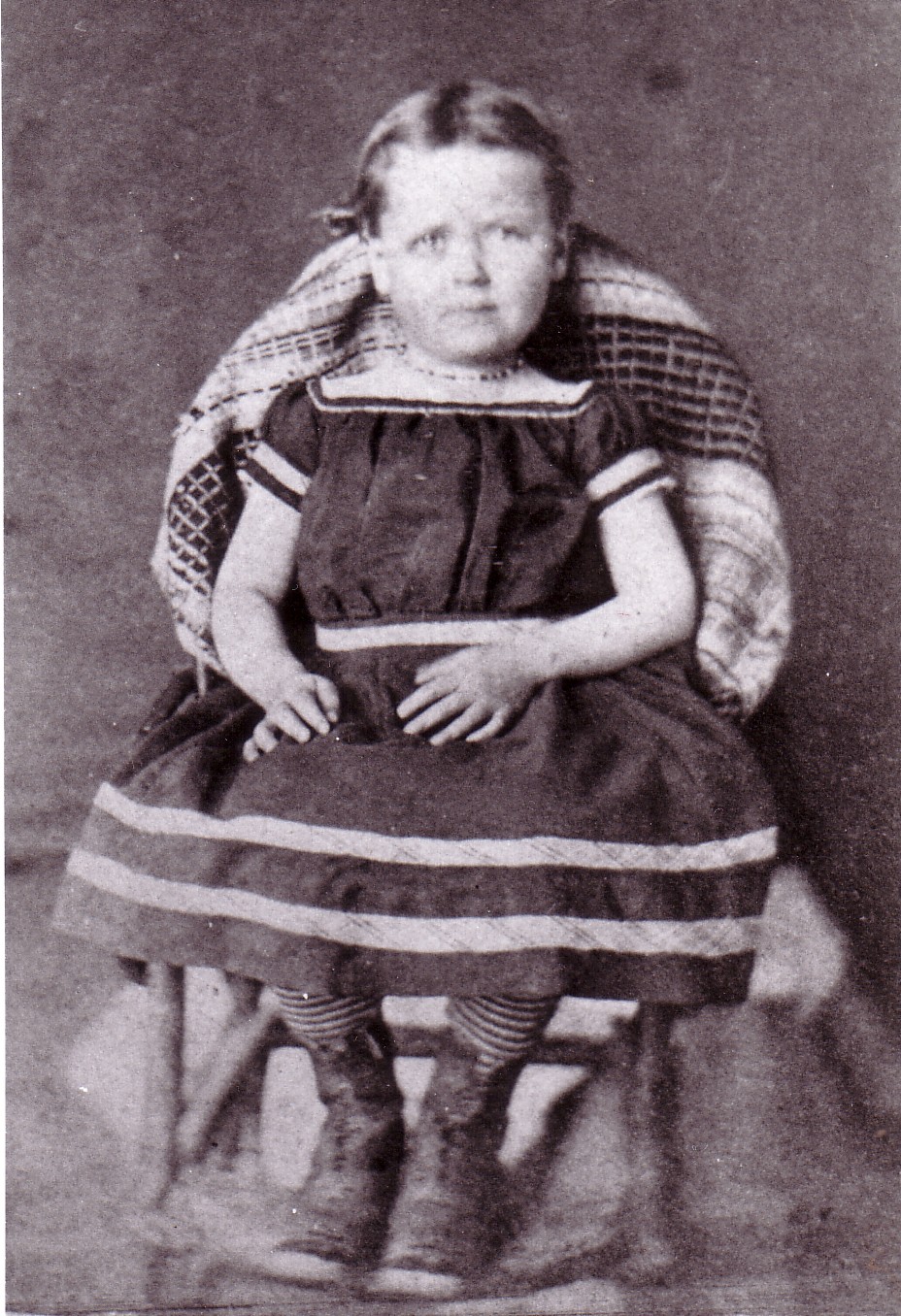by Lisa Cooke | Mar 23, 2015 | 01 What's New, Census, Memory Lane, United States

Edna Selby, about age 4. Taken about 1873.
Baby names are trendy things. Sure, there are a few standbys in every culture–like William and John in English–but popular baby names come and go. In fact, sometimes you can guess about how old someone is today based on their name (think Josh, Mildred or Shirley).
Popular Baby Names by Decade can help you decide whether your great-grandma Beulah or great-uncle Earl’s names were unusual for their time or a whim of the generation (Earl ranked 21st in 1890 and Beulah ranked 78th).
The site has lists of the most common names in the U.S. census back to the 1880s. You’ll also find a master list of THE most popular baby names during the last 100 years. No surprise: in the U.S., James, John, Robert, Michael and William top the boys’ to buy medication online charts. But I was a little surprised at the most popular women’s names. Click here to see what they are.
Was your ancestor an ethnic minority whose name may have only been popular in their neighborhood or where lots of other Irish, African-Americans or others lived? You can also search for the most popular names within a particular state.
Take a look and think about how your own family falls in. My parents weren’t following the crowd when they named me Sunny, that’s for sure. But my grandmother was a trendy gal: all 7 of her living children’s names hit the top 15 in the 1940s! And in Genealogy Gems Podcast episode 78 Lisa has talked about not only the popularity of her first name, but the soap opera star that made Lisa #1 in the early 1960s!
by Sunny | Aug 10, 2018 | 01 What's New, Records & databases |
Now online! German civil registration records for Bad Doberman, Berchtesgaden and Minden, as well as WWII UK prisoners of war records, updates to the 1939 Register, parish records for Cheshire, Cumberland and Derbyshire; British newspapers and Queensland, Australia...
by Lisa Cooke | Aug 7, 2017 | 01 What's New, Family Tree Magazine |
Family Tree Magazine has released its newest list of 101 best genealogy websites–and we’re on the list! This year’s list is all about the best free genealogy websites–for US.research, military records, tech tools and more.

Each year, Family Tree Magazine publishes its list of the 101 best genealogy websites. They love sharing their favorite sites with readers and honoring those who create these sites. We just heard that the new list is out–and we’re on it!
 This year, the list focuses on websites that provide genealogy information and records for free. Categories include:
This year, the list focuses on websites that provide genealogy information and records for free. Categories include:
- Big genealogy websites
- Online vital and grave records
- Military genealogy websites
- Genealogy immigration websites
- Genealogy map websites
- Old newspaper genealogy websites
- Genealogy library websites
- US genealogy websites
- Websites for sharing your genealogy
- Online genealogy technology tools
- UK & Irish genealogy websites
- International genealogy websites
- Genealogy social history websites
- Online genealogy tips and help
Genealogy Gems appears in that final category. Here’s what Family Tree Magazine has to say about us:
More than 200 free podcast episodes with research experts make Lisa Louise Cooke’s “genealogy radio” website a must, along with how-to videos, a genealogy book club and a helpful news blog.
We share this category with only five other honorees, including RootsTech and YouTube! Click here for the full list of 101 Best Websites.
by Lisa Cooke | Apr 25, 2019 | 01 What's New, Findmypast, Trees
Findmypast, the leader in British online genealogy, is catching up in the area of family trees. Findmypast has 18 million registered users across its family of brands, which include: Findmypast Genes Reunited The British Newspaper Archive Twile These users have...



 This year, the list focuses on websites that provide genealogy information and records for free. Categories include:
This year, the list focuses on websites that provide genealogy information and records for free. Categories include: